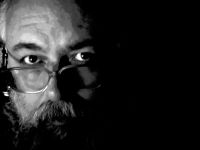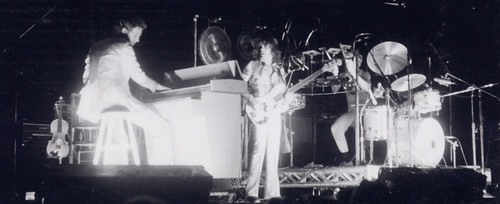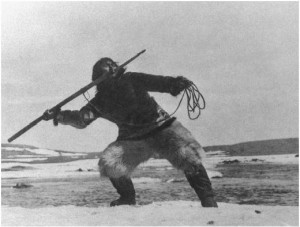I was just having some fun with the Tone Matrix music generator at this site:
http://lab.andre-michelle.com/tonematrix
I could play with that thing for hours… (sounds dirty but isn’t)
(YouTube movie: http://www.youtube.com/watch?v=B9p0iFpE8Ns)

I was just having some fun with the Tone Matrix music generator at this site:
http://lab.andre-michelle.com/tonematrix
I could play with that thing for hours… (sounds dirty but isn’t)
(YouTube movie: http://www.youtube.com/watch?v=B9p0iFpE8Ns)
 Click here for the official site for news and information about the forthcoming album “Gravitas”, a collection of original instrumental music by Robert George Daniel.
Click here for the official site for news and information about the forthcoming album “Gravitas”, a collection of original instrumental music by Robert George Daniel.

Cat House Moon, originally uploaded by rgdaniel.
I just received a request from the good folks at Fluttery Records (www.flutteryrecords.com – site not working at time of writing) to use my image Cat House Moon as the cover of a forthcoming release by indie band Phoenix and the Turtle. Their EP is called “Swallow Up The Moon”.
Fluttery Records described themselves as “a very small independent label”, “more like an artists-helping-artists collective”.
Which reminded me of our own Great Lakes Musician’s Collective, of which I was a member for a while. I guess you’d say I’m an alumnus these days, having hung up the “sticks and tricks” for a while.
Anyway, I said “sure”. So if everyone buys their record, I get… well, nothing… but still… it seemed like a good idea…
I get requests to use photos fairly often. Mostly nobody wants to pay. Mostly I say “no” in that case.
This felt more like a “yes” opportunity…

Two Acrylic Pens, originally uploaded by rgdaniel.
Plastic pens. Hmmm. Do I file this under “Woodworking Projects”?
They turned out better than I feared, and in fact they look better in real life than they do here — I think the flash gets INSIDE the plastic and scatters a bit, causing the visual noise. I toned it down a bit with the dust filter, but still. And that’s the other thing… being plastic, they attract every bit of dust in the room… static cling… and the turning process was horrible, I won’t be doing this again… but they look okay I think… couple of flaws but not bad…
One of my favourite stories from the proverbial progressive rock storybook is the story of how in the summer of 1970, drummer and not-yet pop star Phil Collins came to join soon-to-be PROG mainstays Genesis.
At this stage, Genesis have enjoyed some success with their debut From Genesis to Revelation, but more importantly have recently finished recording their more ambitious sophomore effort, Trespass, considered by some to be the first “real” Genesis album.
Tragically, however, guitarist Anthony Phillips would have to leave the band before Trespass saw the light of day, due to “ill health and recurring stage fright“. Drummer John Mayhew was also to be replaced. The literature is a bit thin on the reasons in Mayhew’s case, although “sucking” has been suggested as a possible factor. (No I don’t have a source; I may have made that up, probably unfairly).
So either as a result of a conversation with Genesis producer John Anthony at the Marquee Club, where the early Genesis had been playing, or in response to an ad running in Melody Maker at the same time, Phil Collins arrives at the home of Peter Gabriel’s parents, of a summer’s day in late July, 1970.
Collins, along with Flaming Lips bandmate Ronnie Carly, arrive early at the audition. While Carly, hoping for the guitarist spot (which would eventually go to Steve Hackett), auditions with Genesis bassist Mike Rutherford, Phil Collins is asked if he would like to pass the time before his turn by going for a swim in the family pool. He accepts.
So while Collins floats lazily in the pool, the band can be heard auditioning the other drummers. Songs from Trespass (not yet released, and unknown to the hopefuls) are used as the audition pieces. By the time it’s Collins’ turn at the drum kit, he’s already heard all the material, several times, and has it down cold.
It also didn’t hurt that Phil Collins is an amazing drummer. And then there’s that puckish charm and cockiness that would later become so annoying, but which at this point was still endearing. Gabriel would later recall:
“Just the way he sat down on the stool, I knew that he was going to be good”.
I know exactly what he means… never, in my experience, has a drummer looked so comfortable behind the kit as 1970’s era Phil Collins. There’s a cliché about the how, in skilled hands, an instrument can seem like an extension of the body… in Collins’ hands (and feet) this was never more true. His slouched posture on him just looked relaxed, especially alongside the almost-rigidly upright posture of contemporary (and later, for one tour, Genesis co-drummer) Bill Bruford. That said, an upright, limited-motion upper body stance IS considered healthier by today’s RSI-conscious drummer.
And so on this day in PROG, i.e. August 4, 1970, Phil Collins would be informed that he was now a member of Genesis. And the rest is music-nerd history.
It’s easy to think of progressive rock as being quite separate from the psychedelic era: PROG is 1970’s Britain, Psychedelic is 1960’s California.
But Britain had a quite lively psychedelic scene of its own. The Beatles dabbled in it during their later years, and were known to be fans of the emergent Pink Floyd. The Rolling Stones‘ arguably most interesting album, Their Satanic Majesties Request, was not just a contrived response to Sgt. Pepper’s Lonely Hearts Club Band, but full-blown psychedelia in its own right.
On this day* in 1967, an American guitarist named Jimi Hendrix was brought in at the last minute to headline at London’s legendary Marquee Club. The opening act was a band called The Syn, a precursor of progressive rock’s perhaps most tenacious group, Yes, and featuring future Yes-men Peter Banks and Chris Squire.
In the following video, a rather older-looking Squire demonstrates some pretty decent storytelling skills as he recalls that fateful meeting:
The video is courtesy of the EMP | SFM Oral History Videos project. There’s another one here which explores the origin’s of Yes‘ propensity for wearing capes in the Seventies… funny stuff…
For Peter Banks recollections of the event, check out this article on the Marquee Club’s website. He seemed a bit wound up, understandably, at being the only other guitarist on stage that night other than Hendrix, and with practically all of rock’s royalty seated in the first few rows. Here’s an excerpt from the article:
It was a very peculiar gig. All the Beatles were there, and the Rolling Stones, Eric Clapton and Jeff Beck and every other guitar player in town came along and we had to play one set to all these people! They were waiting for Jimi Hendrix, but we had to play once, come off and then play another set. So people were going ‘Well thank God if they’ve gone’. Then we came back on again! It wasn’t very nice for us but it was great meeting Hendrix.”
* Once again, for the purposes of this article, “this day” in PROG was actually January 24, 1967. But let’s not sweat the fine points…
In the spirit of the revisionism of which I am accused in Robert Fripp’s Diary, allow me to insert this mercifully brief rebuttal. I in no way intended this as an attack on anybody, and am surprised at the anger coming back. I’m just an old fart indulging in some personal nostalgia. And the mystique of all things Fripp was very much part of my youth. The recording in question, recently purchased for download from the DGM site, brought back some of those memories, and seemed suitable fodder for a blog post that (normally) nobody ever reads. So apologies for any offense — none was intended — but I stand by my skewed view of reality, because as I said so inelegantly in the comments, this ain’t journalism… the only thing I’m “reporting” on is the addled impressions of a young man some 35 years ago… Original post follows.
(Marking the first entry in a series of posts by this name. You know, maybe.)
On this day* in 1973, progressive rock fans got a short refresher course in the strangeness of Robert Fripp.
During a King Crimson concert at the University of Texas at Arlington, guitarist and bandleader Robert Fripp emerged for a moment from the shadows at stage left, where he lurks in darkness as a way of drawing attention to himself, and approached John Wetton’s microphone.
Since in the normal course of events Fripp does not talk to the audience, he does not require his own microphone. So the fact that he’s now emerging from both darkness and (vocal) silence suggests we’re in for a pronouncement of some significance.

(King Crimson in Toronto, 1974. Fripp not shown.)
The audience members, like good Texans, have themselves been rather vocal this night, a hootin’ and a hollerin’ like they will, including it would seem, issuing cries for the band to play louder.
King Crimson was known during this era in particular, for their mastery of dynamics, their tendency to build slowly from small beginnings up to “barrage” level. Lark’s Tongues in Aspic Part One comes to mind as the seminal example of this, being the first track on the first album of their mid-1970’s incarnation. The song builds slowly but relentlessly up to a highly-focused, highly-organized sonic assault. But, like the proverbial frog in the cooking pot, being brought slowly to the boil, maybe the Texans didn’t notice it happening?
In any case, I can only imagine the Texas crowd was not so much asking them to play louder, as asking them to play louder more often. They don’t like them quiet parts. Quiet parts are for sissies, like Canadians.
So Robert Fripp takes the microphone from the much taller Wetton’s mic stand, and delivers this pronouncement in his precise, upper-class Dorset accent:
“I have heard a request from a gentleman over here to play louder….I would make one suggestion: if we’re not loud enough sir, perhaps you’d care to listen more attentively?”
Whereupon he returns to his stool, his throne of darkness, perhaps leaving some to mutter to themselves: “listen a-what-ively?”
This interchange was made famous on a bootleg recording released on vinyl back in the day, which is how I am able to pretend I was actually there. Also, having attended several shows from this period (see photo above), I can channel my memories of those shows into extra realism.
The recording is also available for download from the DGM website. Along with just about every second of every performance the band ever gave. Making me think those rumours may actually have been true, that Fripp would show up at the homes of advertised bootleggers, demanding they hand over his intellectual property.
*One last thing: for the purposes of this article, “this day” in PROG history was actually October 6, 1973. But let’s not split hairs.
If you had ever hoped to someday see drummer Bill Bruford perform live, again or for the first time, your chances of that happening are now pretty much zero.
From allaboutjazz.com:
After 41 years spent first in the art rock arena with everyone from Yes and King Crimson to Genesis, in addition to his own inestimable forays into fusion with his critically and popularly praised ’70s group Bruford, then turning to things more jazzy from the ’80 onwards with various incarnations of his much- heralded Earthworks group and his equally acclaimed improvising duet with pianist Michiel Borstlap, veteran drummer Bill Bruford has announced he’s hanging up his sticks and and retiring from public performance, effective January 1, 2009.
As Bruford told AAJ’s Managing Editor John Kelman, “41 years of me is quite enough for anybody, and especially me!” though he thankfully clarified that he’s not retiring from recording.
Here is a photo I took of Bruford in performance with King Crimson in 1974.
The Great Lakes Musicians’ Collective presents the 1922 silent film documentary “Nanook of the North” directed by Robert Flaherty, with an original live soundtrack by the Silent Film Ensemble, featuring: Charlie Glasspool, Tara MacKenzie, Jon Cox, Pat Dorfman, Jon O’Leary, Bob Daniel, and Josh Richardson.
Saturday, February 7th @ 7PM
Downtown Bookstore, Owen Sound.
$5 Admission. Advance tickets are available at the Downtown Bookstore.
“‘Nanook of the North” buy soma online 500mg follows an Inuit hunter and his family as they struggle to survive in the Hudson Bay Arctic region in the ‘traditional’ manner idealized by Western European civilization. In fact, much of footage in ‘Nanook’ is staged – despite this, it is a fascinating document of the Western European objectification of a people it still knows so little about.

As part of the By Chance series presented by Owen Sound visual artist Alan Glicksman, avant-garde art-noise aficionados 54×3 recently entertained a crowd of several in Durham, Ontario.
Here are some excerpts.
And here is photographic proof:
(l-r) R.G.Daniel (MIDI percussion, synth, toys), Alan Glicksman (old-skool synth, percussion), Alan Briks (harmonica, more toys)
….. photos by Lynda Chiotti